Student Projects
Each year OISE graduate students contribute to the deepening of sustainability in a variety of ways, through both course work and co-curricular learning. Some of these projects contribute to embedding Environmental & Sustainability Education into K-12 classrooms, considered as a form of Community-Engaged Learning. Others find innovative ways to bring sustainability & climate action into the OISE building or ethos, often devised as Campus as Living Lab projects. What follows are exemplars of the ways that our students contribute to re-thinking education's roles and responsibilities to address the climate crisis.
![Grade 6 Honey Bees-Students Project [cropped]](/home/sites/default/files/styles/inline/public/2023-03/grade-6-honey-bees-1.png.webp?itok=Sdkd5G8D)
Grade 6: Honey Bees and Biodiversity
This mini-unit designed by Michael contains 3 sequenced lessons and 2 digital field trips that cover the Grade 6 Ontario curriculum for biodiversity. It seeks to educate students on the connection between biodiversity and its contribution to stability in the natural environment. The mini-unit delves into the important role of honeybees in specific and its assistance to plant reproduction, as well as exploration on what are some ways people can do to sustain bees in nature. A wide variety of teaching resources are included as well. To learn more, view this resource here.

Grade 10 Canadian History: The Oka Crisis Lesson Plan/Place-Based Education Video
Created by Cyrina Santello, this resource is designed for a Grade 10 Canadian History class which talks about the Oka Crisis in Canada. The lesson describes some of the significant issues relating to the environment between the Canadian government and Indigenous communities and make conclusions about sustainable land use. The resource and its activities span across the Ontario curriculum, with connections ranging from Grade 10 Civics, environmental/ecojustice education, to students' lives. An in-depth lesson plan is provided here with Place-Based Education Video: Teaching Canadian History with Downsview Park.
![Food Sustainability -Student Project [cropped]](/home/sites/default/files/styles/inline/public/2023-03/food-sustainability-1.png.webp?itok=Ji52FQgC)
HFA4U: Food Sustainability, Foraging & Aboriginal Views
These lessons created by Yuliya Petrunkina for the HFA4U: Nutrition & Health course touch on the topic of food sustainability. The lessons relate to the environmental unit of science and allow students to assess the environmental implications of a variety of food choices, and evaluate and propose ways to improve the nutritional content of a menu. Students will be informed about Indigenous diets and the challenges caused by environmental issues for all food production. View the lesson resources here.

Grade 12 Organic Chemistry SCH4U: Ethnobotany & Ethnochemistry
Nicole Kraljevic has developed an organic chemistry unit that focuses on teaching drug discovery through a holistic lens. Students will assess the social and environmental impact of organic compounds used in everyday life and propose a course of action to reduce the use of compounds that are harmful to human health and the environment. Students will also develop their scientific literacy skills by devising and restructuring the scientific method in ways that incorporate both Western science and Indigenous science knowledge. To learn more, view this resource here.
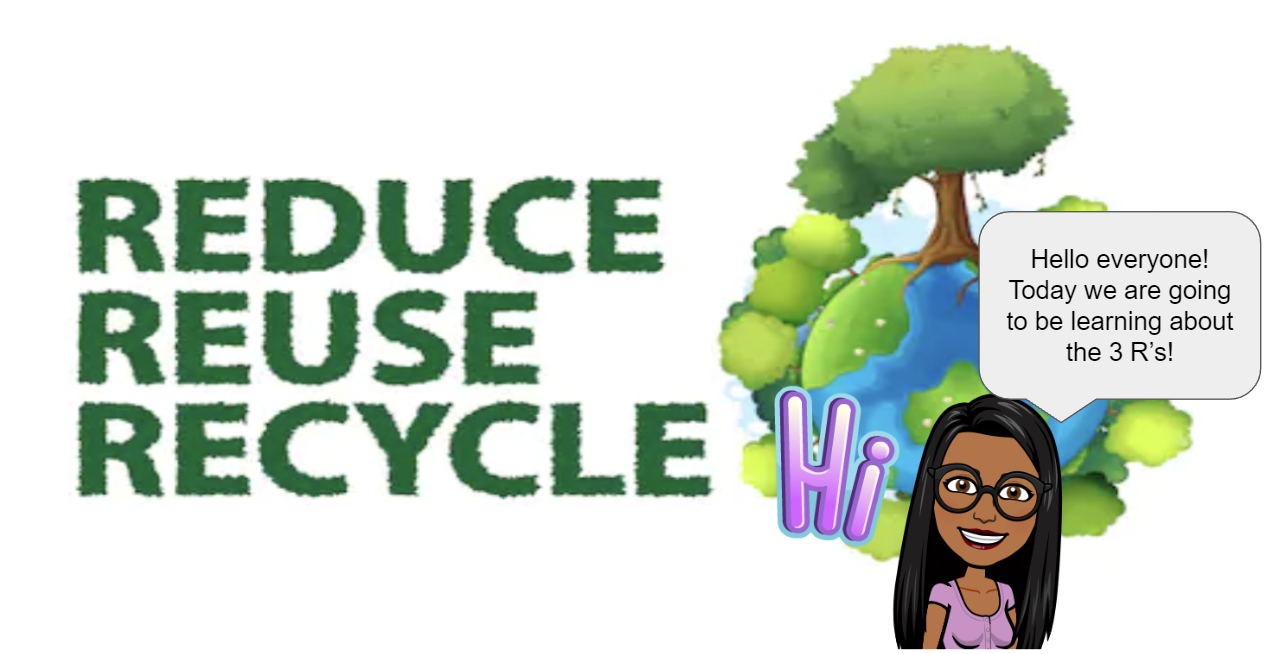
Grade 1 Reduce, Reuse, & Recycle Digital Field Trip
Sauda Dinally created a fun and engaging digital field trip lesson for Grade 1 students to learn more about the 3R's (Reduce, Reuse, Recycle). According to the Recycling Council of Ontario, the average student’s lunch creates about 30 kilos of waste every year. The main purpose of the lesson is to raise young students' awareness to reduce the impact on the environment by reducing & managing waste. Teaching them to reduce waste to a minimum and dispose garbage correctly is critical to living sustainably. To learn more, view the resource here.
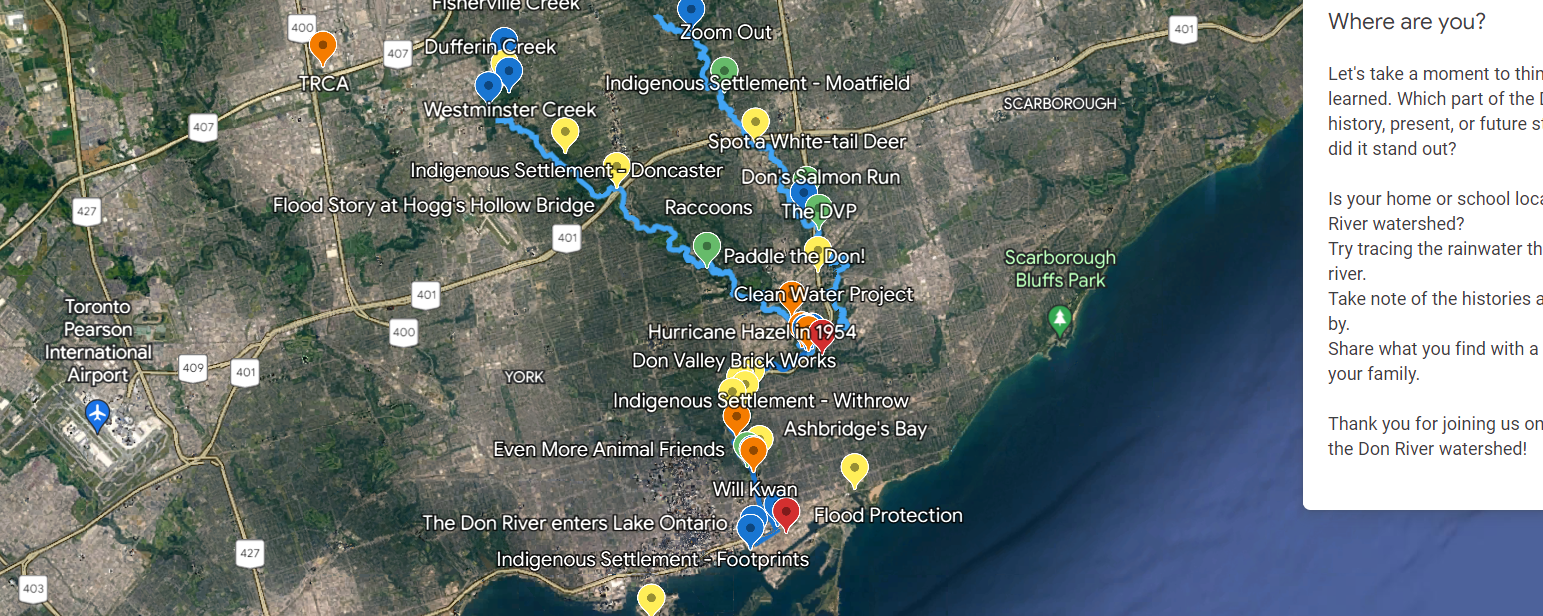
Geography: Don River Watershed Google Earth Resource
This digital educational resource by Venuri Liyanage is a great way to engage students in Geography courses through examining the Don River watershed -- one of the main water drainage systems in Toronto. The resource includes information on how the topography of Toronto contributes to the Don River watershed and how the development caused large floods and endangered its ecology. It takes a historical and forward-looking approach to bring awareness of students' backyard ecosystems and the local environment in relation to sustainability. To learn more, view this resource here.
![Nature-Based Mindfulness - Student Project [cropped]](/home/sites/default/files/styles/inline/public/2023-03/nature-based-mindfulness_1.png.webp?itok=1zvtgKJf)
Nature-Based Mindfulness in K-12 Classrooms Teaching Guide
This resource created by OISE MA-CSE student James Ty contains a collection of mindful videos and scripts to facilitate nature-based mindfulness in classrooms. These activities could be easily implemented in elementary or secondary schools. Mindfulness activities can be used to start off the day, as an introduction to a new unit, or to support students' mental health. Science curriculum expectations as well as post-activity student reflections are incorporated into this resource. For more information, view this document here.
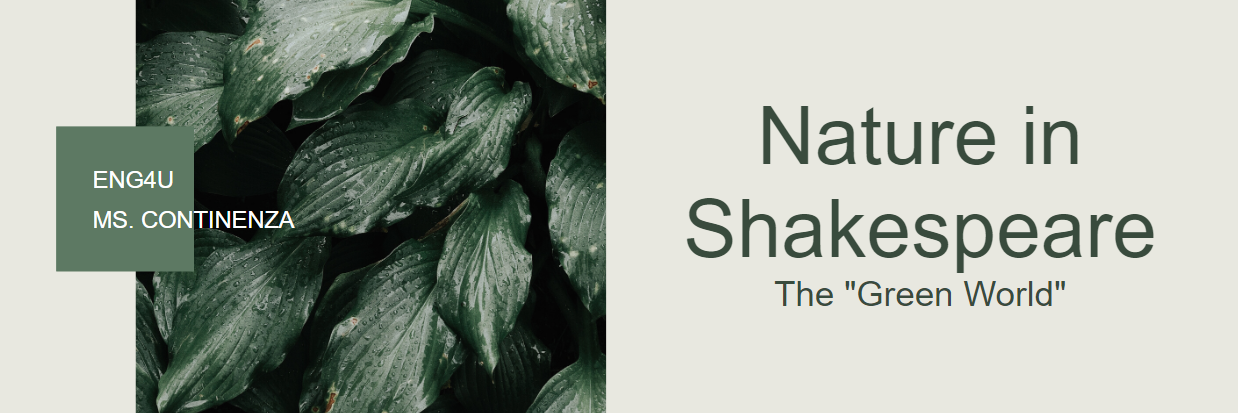
Grade 9 English ENG4U: Spatial Justice
This outdoor lesson plan by Claudia Continenza allows students to analyze their community through a spatial justice lens and relate it to class discussions of A Midsummer Night’s Dream. Students will be asked to apply their knowledge of spatial justice to identify status in Shakespeare's work, as well as look for inequities in their own world. This is a great way to take learning outdoors and give students a chance to dive deeper into the topic of urban space inequities in relation to ecojustice sustainability education. Check out the lesson plan and PowerPoint resources here.
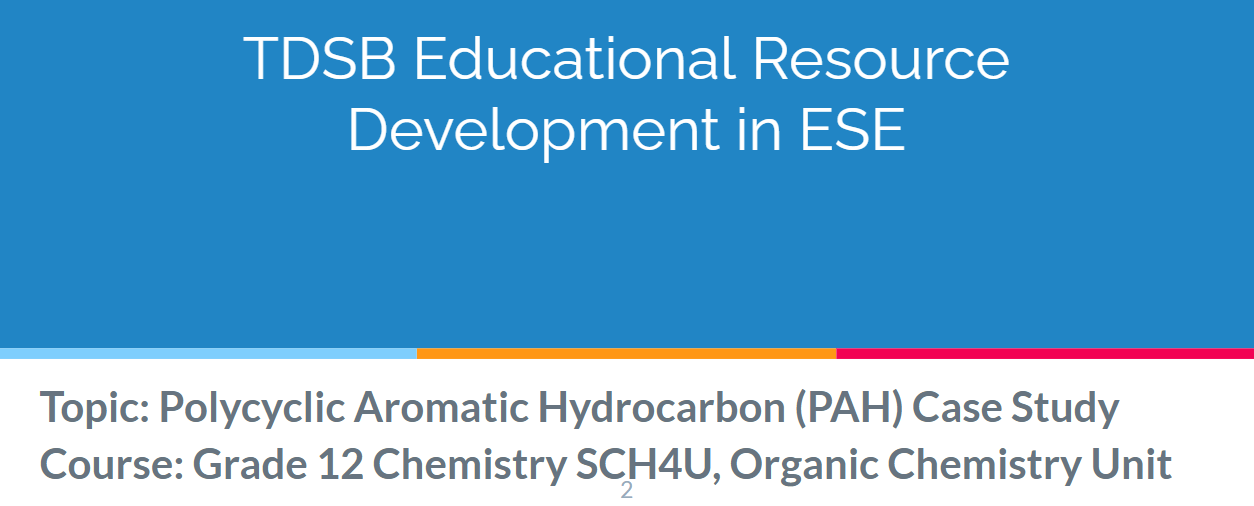
Grade 12 Organic Chemistry: Randle Reef Case Study
This lesson plan created by Nicole Kofman connects the organic chemistry curriculum seamlessly to environmental and ecojustice education. The lesson plan comes with a Case Study where students get to analyze Randle Reef - the largest contaminated sediment site of the Great Lakes in Hamilton, Ontario. Students will work in a group to investigate the major sources of Polycyclic Aromatic Hydrocarbon (PAH) in Hamilton Harbour and propose ways in which people can do to reduce PAH in the environment to prevent future contaminations. This interactive lesson is a great way for students to connect what they learned in organic chemistry class to solve relevant real-life case studies. To learn more, you can view this resource here.
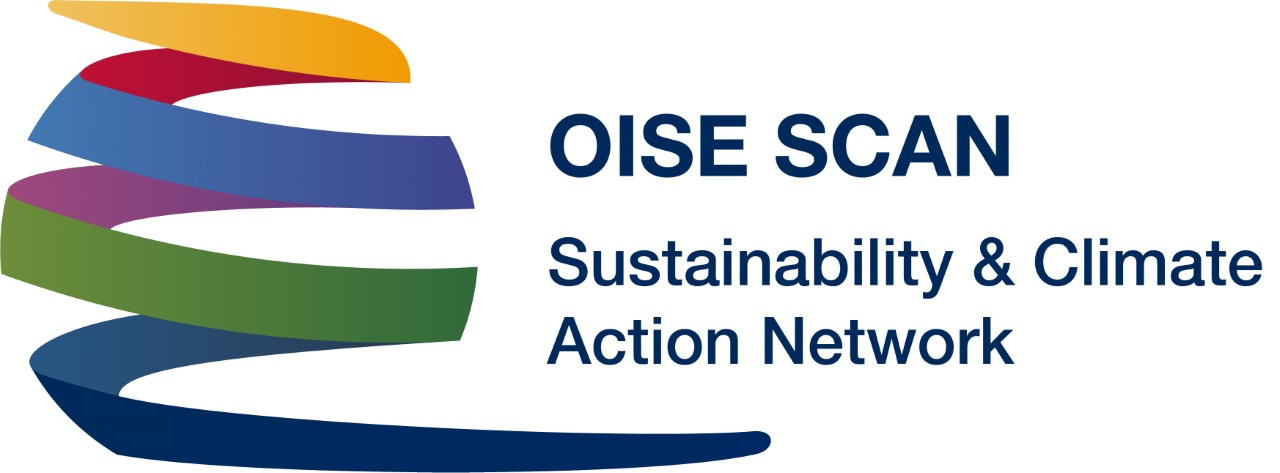
'Take the Stairs' Campaign
Each fall we run a campaign around 'taking the stairs' stair at OISE to reduce the use of the OISE elevators for three key reasons, Health & Wellness, Accessibility & Equity, and Energy Conservation. Leaving the elevators for those who need to use them will help all to get to where we need to go on time, and also provides a great opportunity for daily physical activity while helping to reduce the energy consumption of the elevators at OISE. In September and October you'll find pop-up performances by musicians and poets in the main stairwell to encourage your stair use. In addition, students, faculty and staff are invited to enter the Amazing Stairs Race competition for the prestigious GOLDEN SNEAKER award.
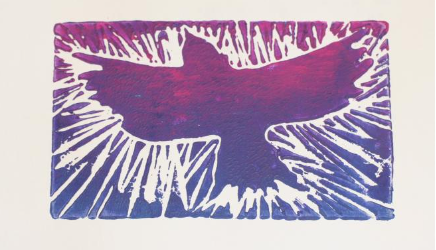
FLAP - Fatal Light Awareness Program
A team of OISE B.Ed students headed up by Raysha Carmichael, Michelle Attard and Sindy Lui led the FLAP eco-art project to help raise awareness of the challenges of bird deaths around high buildings in the city. Over 300 handmade bird prints were created and distributed to all of the exterior OISE offices, reminding faculty and staff to do their part. The prints act as an artistic reminder for people to close their office blinds each night, as well as turn off overhead office lights and use task-focused lighting at night. Click here for more information on their project.

Cycling for Energy
OISE B.Ed students Andrew Rogers and Jason Sanders-Bennett built an energy-creating bicycle for one of their course projects, creating sufficient electrical energy to power a MP3 player, as well as a tester of different kinds of light bulbs. Click here to learn more about their project here.
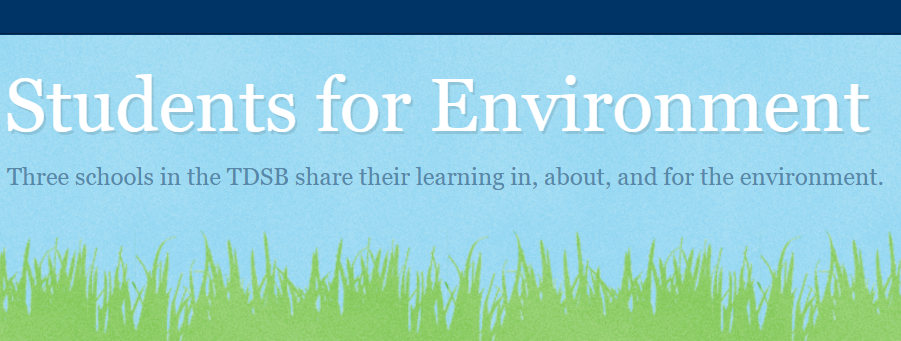
Students for Environment Blog
StudentsforEnvironment is an online forum created for the purpose of encouraging collaborative learning across the Toronto District School Board on topics that are central to Environmental and Sustainability Education. This forum was started in March 2011 by three environmentally aware teacher candidates from OISE as part of a course project. Our environmental teaching and learning focused on water conservation and protecting our local watershed, which is the area of land that catches rain and snow and drains into a marsh, stream, river, lake or groundwater. The three schools involved, Grey Owl Junior Public School, Duke of Connaught Junior and Senior Public School, and Bala Avenue Community School are situated in The Rouge, The Don, and The Humber watersheds, respectively. Check out their activities here.
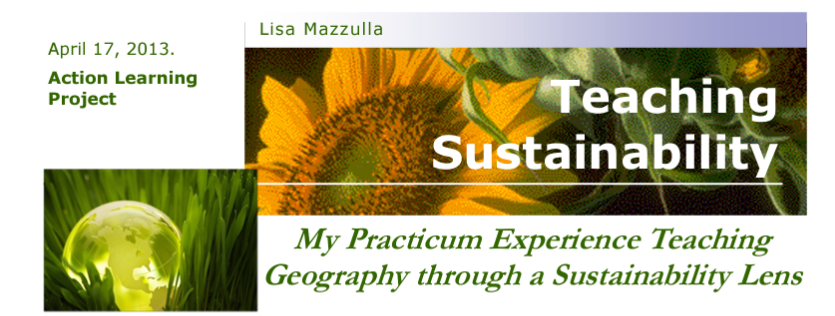
Teaching Sustainability for Secondary Geography
During her final practicum, MMT student Monica Brewer developed and delivered a unit on sustainability in a grade 9 applied geography course. The emphasis was on the impact of the choices we make on the environment, which can be positive as well as negative. The students particularly enjoyed the experiential components of this unit, which is described in this video.
OISE B.Ed student Liza Mazzulla developed and implemented units on sustainability for her three geography classes, in which students reflected on their own relationship to nature and then looked further into the role Canada plays on the national and global environmental stages. Students engaged in debates over waste disposal plans, tracked the environmental impact of consumer goods, and researched what makes a resource “sustainable.” The units focused on heightening the critical awareness of the students in regards to their own consumption and how they themselves can work for positive environmental change.
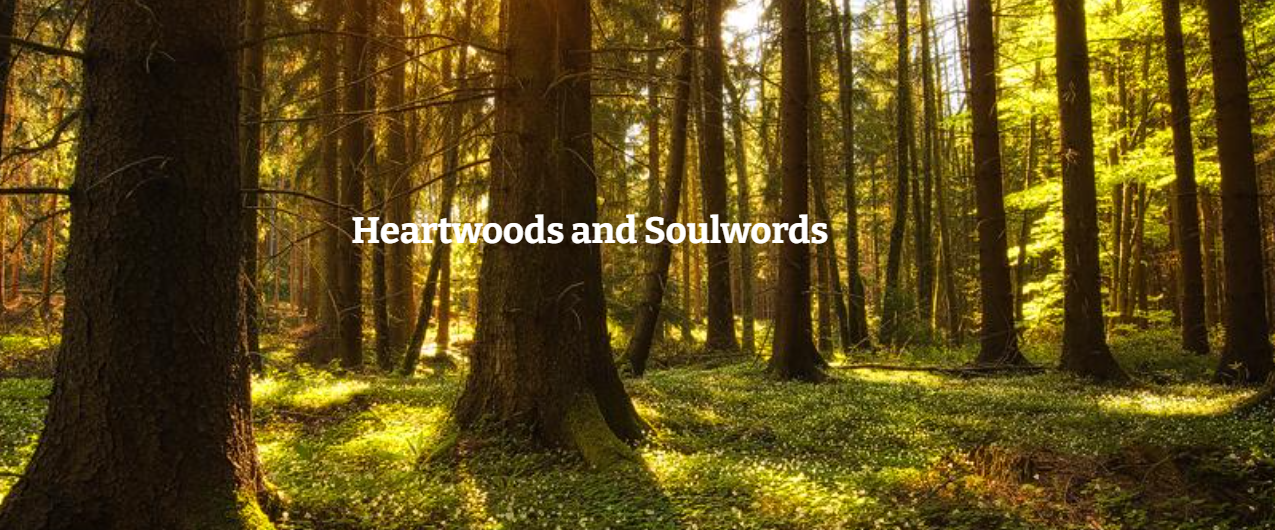
Integrating Sustainability into Teaching English
Master of Teaching Student Ellen Jamieson developed the Heartwoods and Soulwords website which showcases a unit that was designed and piloted with a virtual grade 12 English class. The Poe[TREE] Unit is focused on four main components: Environmentalist Poetry, Climate Change [Art]/[Act]ivism, Nature Journaling, and A Diversity of Texts. This project integrates nature mapping, art and literature, gratitude, and reciprocity in an effort to build community and connection while supporting student well-being.
Master of Teaching student Kellie Grammar designed and implemented a novel study for grade 9 English infused with Environmental & Sustainability Education (ESE). Her goal was to incorporate ESE principals into her unit on Fahrenheit 451 to develop the students' use of figurative language and their sense of natural curiosity. Kellie was aiming to unlock their creative potential by grounding their learning in nature. Watch her video to learn more.

Power of Knowledge – Bird Conservation Education in Action
This blog run by Nicole Vella-Geldart delves into the wild and wonderful world of birds, aiming to educate about avian diversity in Ontario while looking at issues on a global scale which affect the birds, and ourselves, here in Ontario. The project also seeks to foster an emotional and empathic connection between the student and nature, so that moving forward these learners will feel motivated and empowered to protect avian species and all biodiversity. The blog includes descriptions of classroom activities related to avian conservation, links and descriptions of other programs that work to help preserve avian species, resources for both educators and students, and a large collection of beautiful images. Learn more about this project by clicking here.

Audiosynthesis: Teaching Nature through Music
Teacher/musician Jeff Sereda has developed a unit for an instrumental music class that examines what elements of music exist beyond basic notation, framing this through the lens of environmental education. The unit contains a variety of lessons that instructs about rhythm, emotion, tone, and a number of other elements of music by taking students outside to hear the natural music that exists in our outdoor environment and reflect that in their own compositions. Jeff has also put together a compilation of songs relating to the environment and sustainability that can be used in tandem with this unit.
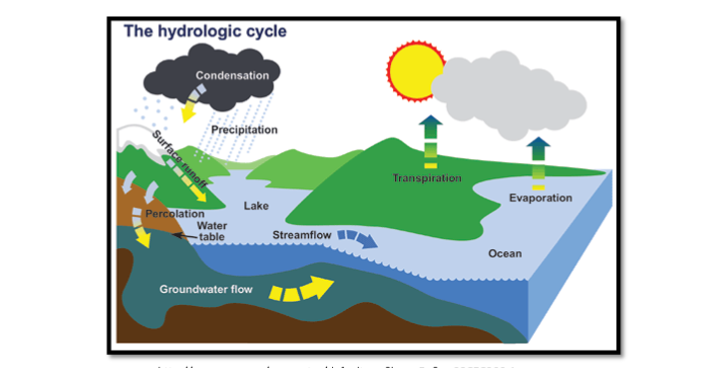
The World Water Game
Developed by Sonia Wing, this game examines the growing fresh water crisis that exists in our world and what forces are at play as access to fresh water rapidly declines. Applicable in geography, politics, civics, and many more subjects, students are divided into 4 groups, each representing a different country, and the object of the game is to have the most water or “points” at the end of it. This game will reveal to students the power dynamics that exist behind the commodification of fresh water in a fun and engaging manner, while also raising awareness of the seriousness of the global water crisis and encouraging students to take positive actions in their own lives in regards to this.

Environmental Philosophy
This mini-unit designed by Stephanie Cochrane seeks to educate students on the connection between philosophy and the environment. It covers ethics, metaphysics, philosophy or science, and social/political philosophy in order to show the interconnection that everything on Earth has with the environment. The mini-unit delves into the ways people put value into the environment and the variety of perspectives on nature environment, encouraging students to undergo an active engagement with environmental issues. A wide variety of teaching resources and various lesson plans are included as well.